Waking in the dark isn’t easy, but the stars were once again glorious to see. Ian from Taiwan had a terrific camera and a tripod and apparently got some amazing photos — which he will share once he gets home. Side note on Ian — he lives in Osaka, and is doing medical research involving brains. He had come to Australia for just 4 days, and expressly to see Uluru. He’d seen a video of the area sometime and decided he needed to visit, so he bought a ticket and was headed back to Japan the day after the tour. His English was okay, but he never stopped smiling. This was a dream for him, and I expect he will have some wonderful photos.
We arrived at the rock and started walking the base walk at 6:30AM. It was a bit chilly, but a 7km walk in the morning is sure to warm one up. I chose to walk alone most of the way, and took pictures as the sun began to rise and color Uluru in different ways. Considered a sacred place by the Anangu people, there were some spots that had signs specifically requested that photos not be taken. And while some do it anyway, they request that people not climb it. There were several spots along the base path that told elaborate stories, myths, that the indigenous people believe, and are what make Uluru a spiritual and special place. I wanted to walk alone to feel that spirit (reminded me of the high energy places in Sedona), but there were some families on bicycles and a couple on Segways and some using the path as a jogging trail. So much for sacred and spiritual.
Tjukurpa is the word that the Anagu use to describe the force which unites Anangu with each other and with the landscape. It embodies the principles of religion, philosophy and human behavior to ensure people live harmoniously with each other and the land. One of the best known of the stories/myths is the Mala story, which we learned after our base walk, on an hour walk around an area where the Anangu people used to live at Uluru.
The Mala people came from the north and could see Uluru and through it was a good place to stay awhile and make inma (ceremony). Men raised Ngaltowata, a ceremonial pole and placed it on top of the rock. In the middle of preparations, two Wintalka men from the west approached and invited the Mala people to join their ceremony in their country. The invitation was declined because the Mala had already begun their ceremony and it could not be stopped. The disappointed Wintalka men went back and told their people. They summoned up an evil spirit, a huge devil dog called Kurpany to destroy the Mala ceremony. This devil spirit changed form as he travelled to Uluru, including bark, birds, grasses. Luurnpa was the first to spot him and sent out a warning that was not heeded, and men were attacked in the men’s cave, and some were turned to stone. Others fled south through a small slit in the rocks. This, and other stories are passed down, and various markings and spots on Uluru are evidence of these myths. A black scar down the side of the rock is from a spear which was thrown. A stolen hunted emu is evidenced by a split in the rock which was the emu’s leg. So every part of Uluru represents and provides evidence of the ancient people who lived in the area, and the various histories which form the deep cultural beliefs.
Our last stop was the Cultural Center which re-tells some of the stories and explains the different law that the people live by. And tells of the history of this place as a tourist spot. People started coming to the area in the 1950’s and it was declared a national park in 1958. Unfortunately, with people and tours, the aboriginals were pushed out in the 60’s and tacky motels began to spring up. When the Australian government began the land claim project, the indigenous people from the area made a claim and won it — in 1985 it was handed back to the Anangu traditional owners, who then leased the land to the federal government for 99 years. There’s a board of management for the parks that includes 4 Australian Parks people, 4 Anangu men and 4 Anangu women, who work together to jointly manage the place. The tacky motels were torn down, and there’s just the one resort in the area, with various levels of accommodations. The park has been recognized as a World Heritage site for both its natural and cultural values.
Then it was back to the airport and civilization and a long and delayed trip to Brisbane. And a nice soft bed with a private bath.
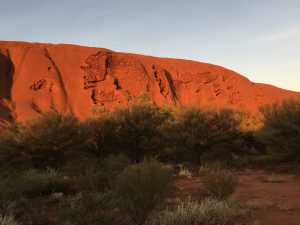
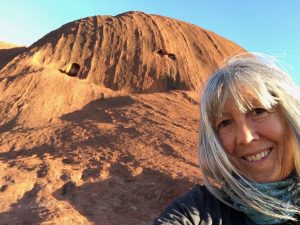
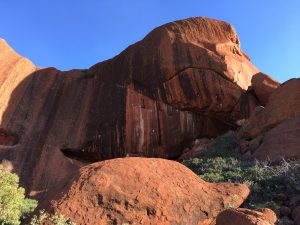
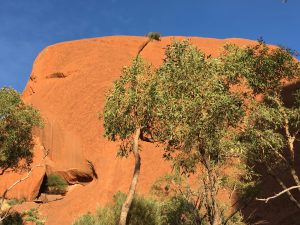
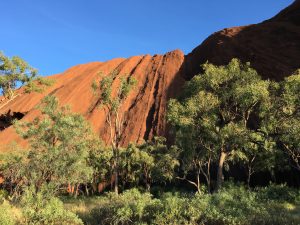
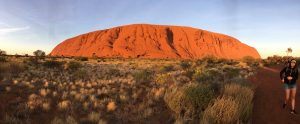
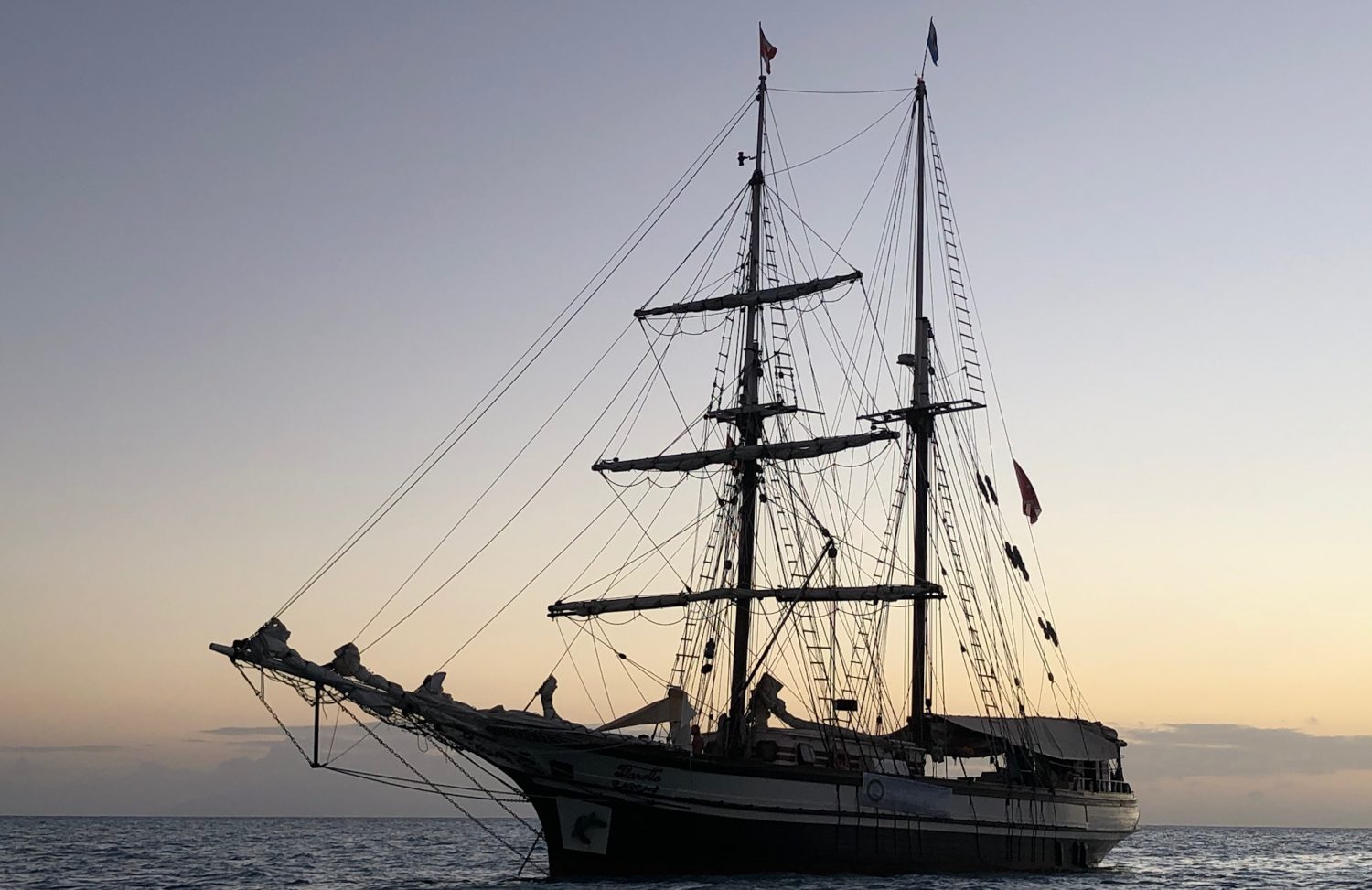
Oops, I climbed it back in the day. Hope that doesn’t come home to roost with karma….